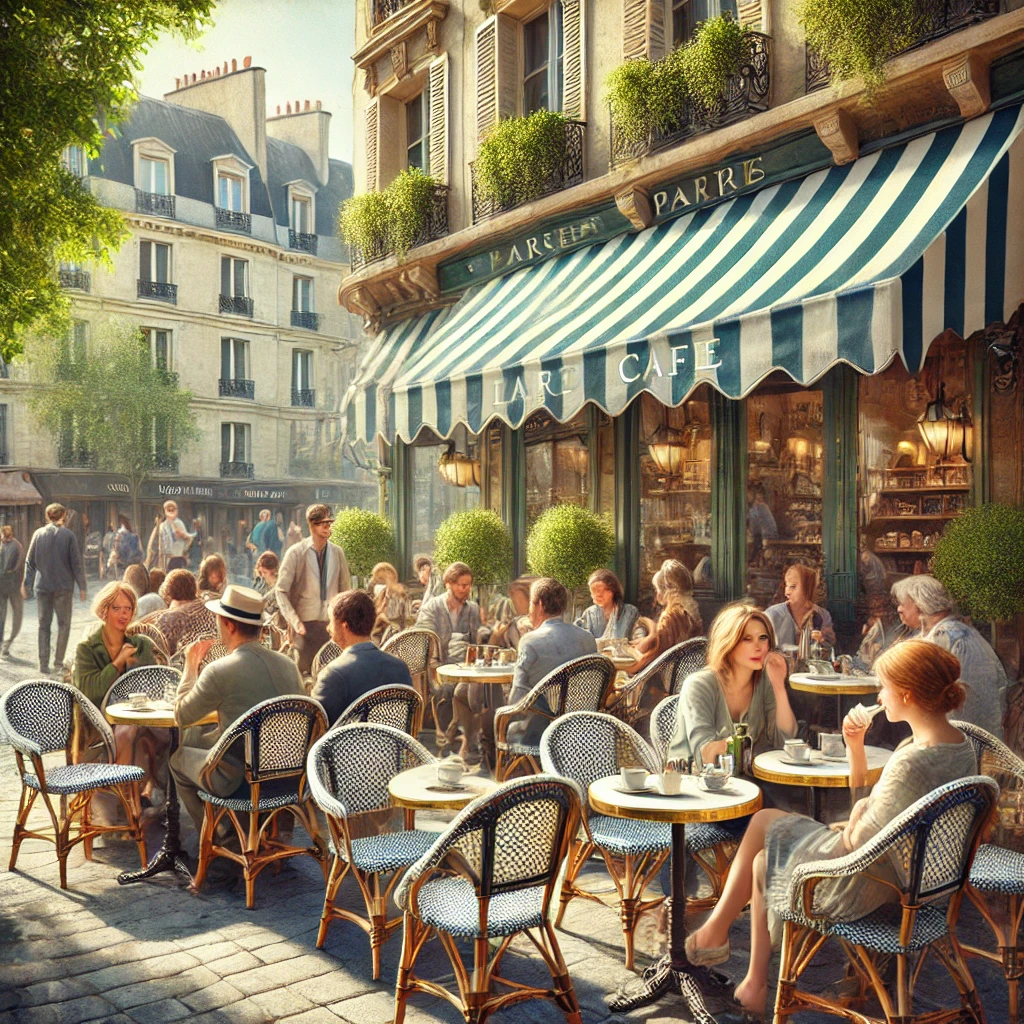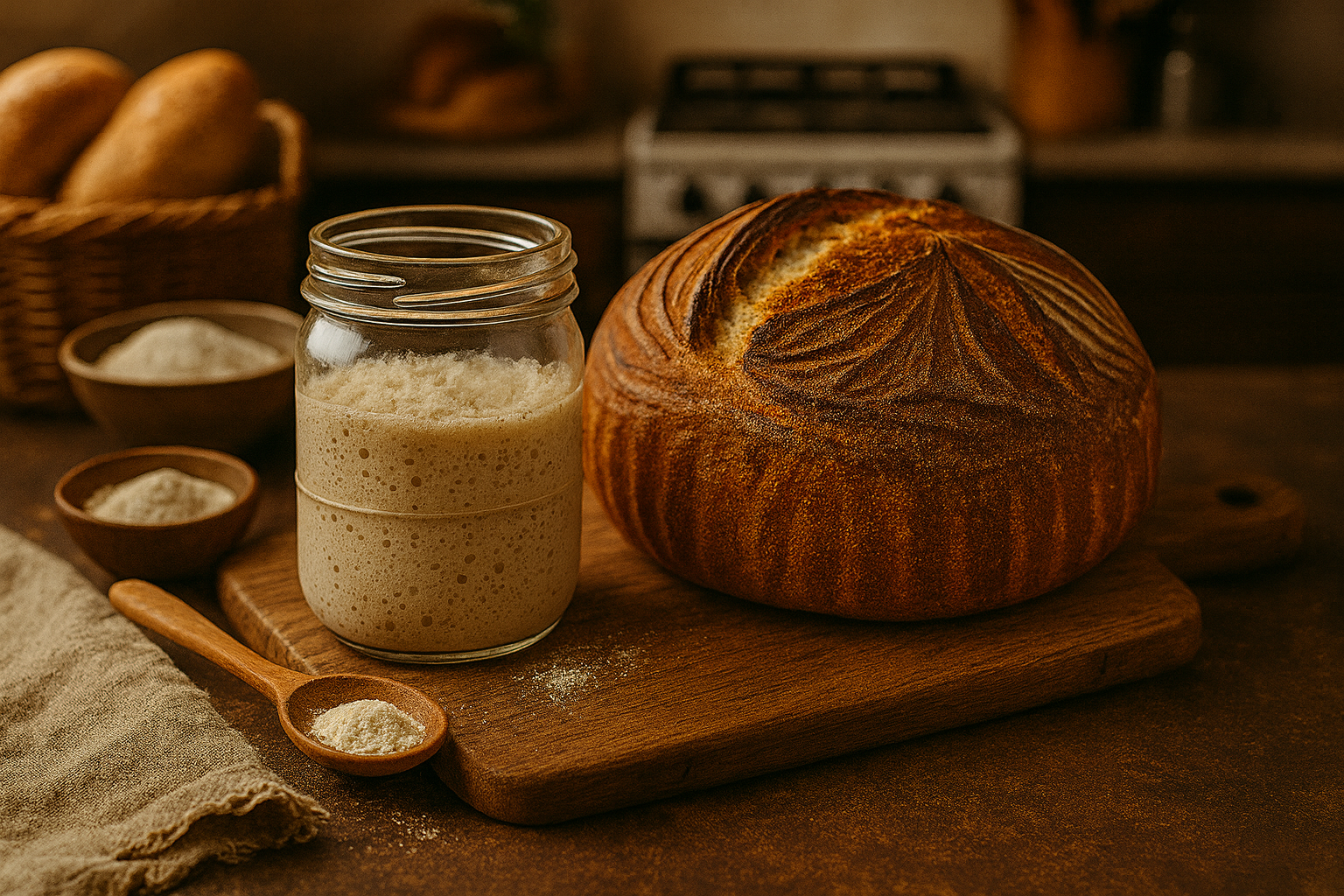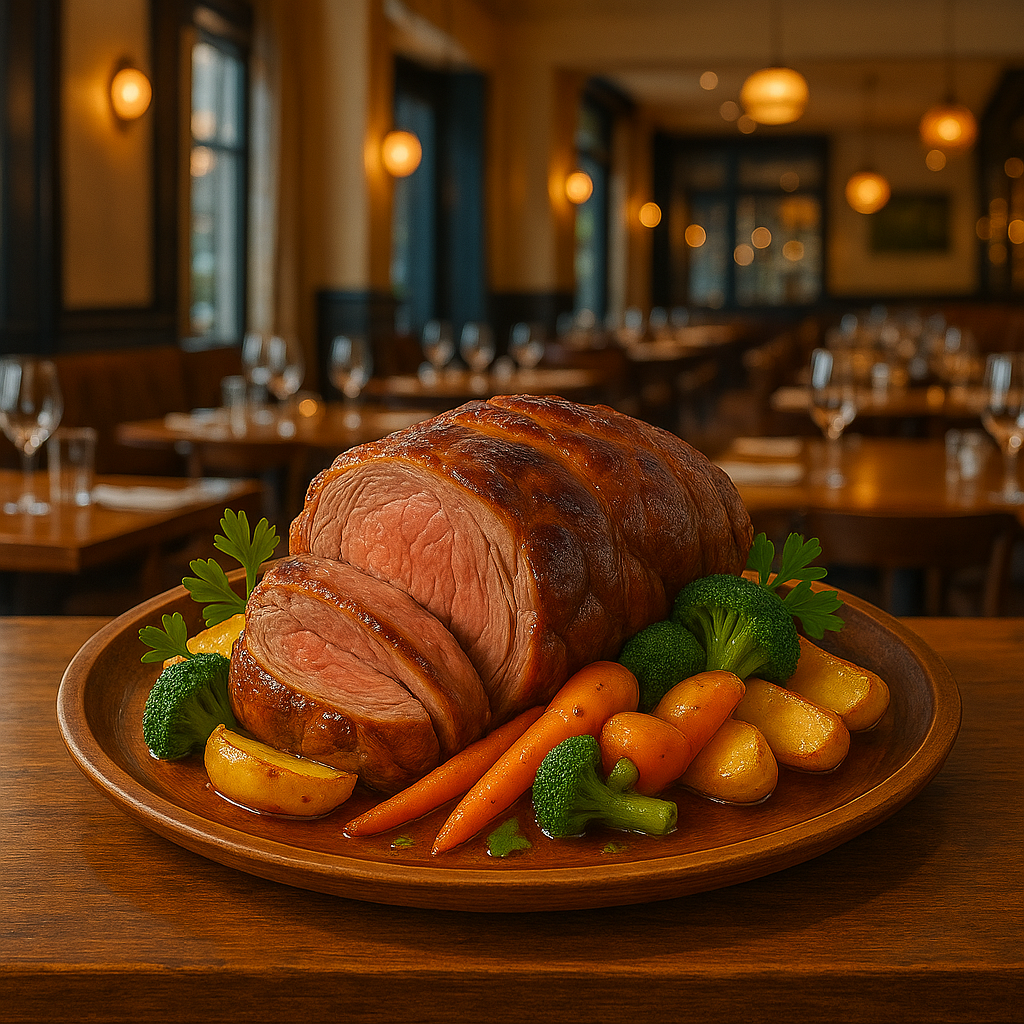Table of Contents

Introduction: The Cultural Significance of Parisian Cafés
Parisian cafés are more than just havens for coffee enthusiasts; they are an integral part of France’s cultural fabric. These establishments have historically served as social, intellectual, and artistic epicenters, a tradition that continues to this day. Walking into a Parisian café is akin to stepping into a living museum where history intertwines seamlessly with contemporary life. The typical ambiance is a blend of timeless elegance and casual charm, characterized by outdoor terraces, round tables, and the ever-iconic wicker chairs.
These French cafes have been witness to countless intellectual discussions, artistic revolutions, and even political movements. From the existential debates led by Jean-Paul Sartre at Café de Flore, to the artistic musings of Picasso and Hemingway at Les Deux Magots, these venues have long been the breeding grounds for creative and philosophical thought. They have provided a communal space where ideas can be exchanged freely, fostering a culture of open dialogue and innovation.
The longstanding tradition of Parisian cafés also underscores their role as communal gathering spots for local residents. The French custom of enjoying a leisurely coffee while reading a newspaper, engaging in conversation, or simply people-watching, is deeply embedded in the local lifestyle. This unhurried pace and emphasis on social interaction set French cafes apart from their global counterparts. They offer a sanctuary from the hustle and bustle of everyday life, inviting patrons to slow down and savor the simple pleasures in life.
In essence, Parisian cafés encapsulate the spirit of France, representing more than just a place to sip coffee, but serving as cultural landmarks that contribute richly to the social and intellectual heritage of the country. Through their inviting atmosphere and storied past, they continue to be cherished icons of French culture.
A Historical Perspective: The Evolution of Parisian Cafés
The history of Parisian cafés dates back to the 17th century, marking their prominence as more than mere coffee houses. Coffee was first introduced to Paris in 1644, and the first true café, Le Procope, opened its doors in 1686, founded by Italian Francesco Procopio dei Coltelli. This establishment set the stage for cafés to become key social hubs where ideas fermented over cups of coffee.
During the Enlightenment era, these cafes transformed into intellectual arenas. Writers, philosophers, and thinkers such as Voltaire, Rousseau, and Diderot often gathered in these spaces, engaging in deep philosophical debates and discussions. This intellectual dynamism solidified the café as an indispensable part of Parisian culture, serving as a crucible for revolutionary ideas and literary movements.
As we moved into the 19th century, the evolution of French cafes continued as they became the epicenter for the bohemian lifestyle. They attracted artists, writers, and poets like Victor Hugo, Émile Zola, and the members of the Impressionist art movement. These iconic figures frequented cafés such as Café de Flore and Les Deux Magots, contributing to the artistic and cultural vibrancy of Paris. Indeed, these establishments played a pivotal role in shaping French art and literature, cementing their status as landmark institutions within the city.
The 20th century saw Parisian cafés rise to global renown. The period between World War I and World War II was especially significant, with expatriates like Ernest Hemingway and F. Scott Fitzgerald turning cafés into their creative sanctuaries. The intellectual milieu of these iconic French cafes contributed to the inception of existentialism, led by Jean-Paul Sartre and Simone de Beauvoir, who frequented places like Café de Flore and Les Deux Magots.
Today, the legacy of these historical establishments lives on, as Parisian cafés continue to be a melting pot of culture, creativity, and social interaction. The calm ambiance, coupled with rich historical significance, makes them timeless icons, integral to understanding the heartbeat of Paris itself.
Cafés as Social Hubs: Engaging Conversations and Connections
Parisian cafés, often synonymous with the charm of France, serve as quintessential social arenas, much more than just places for a casual coffee. These establishments stand at the crossroads of social life where engaging conversations and meaningful connections occur daily. The inviting ambiance of French cafes naturally facilitates the gathering of diverse groups, promoting an atmosphere rich in cultural exchange and personal interactions.
At any given moment, one can observe a tapestry of social dynamics unfolding within these spaces. Friends congregate over lattes, families share pastries, and even strangers find common ground in these intimate settings. The role of Parisian cafés as social hubs is deeply ingrained in French culture, fostering an environment that encourages both planned meetups and spontaneous discussions.
The layout of these cafés, often characterized by closely arranged tables and cozy seating, further enhances their social function. This proximity not only allows for private conversations but often leads to inter-table dialogues, breaking the barriers between patrons. It’s not uncommon to witness an exchange of ideas between locals and tourists, artists and business professionals, all unified by the café’s welcoming atmosphere.
In addition to being gathering spots for personal interactions, Parisian cafés also serve as fertile grounds for networking. The casual yet professional environment they offer makes them ideal locations for business meetings, freelance work, or creative collaborations. The blend of leisure and productivity, paired with the allure of French coffee culture, makes these cafés indispensable social hubs.
Ultimately, the significance of Parisian cafés transcends their culinary offerings. They cultivate a unique social ecology, where connections flourish and communities are strengthened. Whether through a shared café au lait or engaging in spirited conversation, the essence of these cafes lies in their ability to bring people together, nurturing relationships that extend beyond their charming terraces.
Bohemian and Artistic Influences
Parisian cafés have long been a cornerstone of the city’s vibrant cultural and artistic scenes. These iconic establishments served as the backdrop for the intellectual and creative ferment that defined much of the 20th century. Among the most famous of these locales are Café de Flore and Les Deux Magots in the Saint-Germain-des-Prés district. These cafés are renowned for having attracted legendary figures such as Ernest Hemingway, Pablo Picasso, and Jean-Paul Sartre, each drawn to the convivial and inspiring atmosphere.
For Ernest Hemingway, the Parisian café was an extension of his office—a place where he could write, reflect, and socialize. His novel “A Moveable Feast” paints a vivid picture of how these cafés provided more than just coffee; they were sanctuaries for creativity and thought. Similarly, Pablo Picasso frequented Café de la Rotonde and La Closerie des Lilas, where he found inspiration among fellow artists and intellectuals. These spaces acted as incubators for artistic collaboration and dialogue, fostering a dynamic interchange of ideas that fueled his groundbreaking works.
Jean-Paul Sartre and Simone de Beauvoir are perhaps the most closely associated with Café de Flore, where existentialist philosophy blossomed. These intellectual giants utilized the café as a public forum for discussing and refining their revolutionary ideas. The constant buzz of conversations and debates around them contributed significantly to the development of existentialism, making these French cafés pivotal in shaping modern thought.
The allure of these Parisian cafés lies not just in their historical significance but in their ongoing role as cultural touchstones. Whether you’re an aspiring writer, an emerging artist, or a curious visitor, the rich legacy of these establishments continues to offer a fertile ground for creative expression and intellectual engagement. In the end, Parisian cafés remain more than just places to enjoy a leisurely cup of coffee—they are enduring havens of inspiration, dialogue, and artistic influence.
Café Etiquette: The Do’s and Don’ts
Parisian cafés are more than mere places to grab a quick coffee; they are cultural institutions where the ambiance, interactions, and traditions contribute to their unique charm. Understanding the etiquette can significantly enhance your experience, ensuring moments of pure pleasure and relaxation.
When you walk into one of these quintessential French cafes, take a moment to find an appropriate place to sit. Seating choice varies based on your intention. For a quick espresso, standing at the bar is common practice. If you plan to linger over a café au lait, choose a table, preferably outside, to immerse yourself in the ambience. Always wait to be seated if a waiter gestures to you; this is common in many of the more traditional spots.
Ordering is an art in Parisian cafés. Be concise but polite. A simple “Un café, s’il vous plaît” (A coffee, please) suffices, or specify your preference if you want a latte or cappuccino. Do not rush it; the French way emphasizes savoring the experience rather than hurried consumption. Keep in mind, French cafes typically are not places for customizations; asking for variations might be met with confusion.
One of the key differences you will notice is the relaxed pace. There is no expectation to vacate the table quickly. However, it is courteous not to linger too long during busy times. Staff often check in sporadically; a simple nod or smile is sufficient to signal your contentment or if you need the bill. Tipping is appreciated but modest; rounding up the bill or a small addition suffices as service is typically included.
Another charming custom is addressing the staff respectfully, using “Monsieur” or “Madame.” Many staff members appreciate this recognition. If your French is limited, don’t worry; a sincere attempt goes a long way and breaks down language barriers. Additionally, avoid loud conversations and excessive phone use; a subdued volume aligns with the laid-back café vibe.
In a city where the café culture is an embodiment of leisure and sophistication, understanding these nuances ensures you not only respect the traditions but also enrich your experience. Whether it is your first visit or your hundredth, each moment in a Parisian café reveals a new layer of this delightful tradition.
Iconic Parisian Cafés and What Makes Them Unique
Parisian cafés hold an indelible place in both the city’s vibrant culture and its rich history. Among the plethora of choices, certain cafés have risen to iconic status, known for their unique charm, storied pasts, and the notable figures who have frequented them. Café de Flore, Les Deux Magots, and La Rotonde are three such establishments that offer more than just a quintessential coffee experience; they provide a window into the soul of the city itself.
Café de Flore, located in the bustling Saint-Germain-des-Prés area, has been a Paris landmark since the late 19th century. Its Art Deco interiors exude timeless elegance, and it has been the meeting place for intellectuals, writers, and artists such as Jean-Paul Sartre and Simone de Beauvoir. The lure of Café de Flore lies not only in its exquisite ambiance but also in its historical significance as a hub of intellectual and cultural discourse.
Just across the street from Café de Flore is its equally famous counterpart, Les Deux Magots. Established in 1885, Les Deux Magots has similarly attracted a roster of illustrious patrons including Ernest Hemingway, Pablo Picasso, and James Joyce. The café’s name, derived from a novel, adds a literary flair that complements its role as a center of Parisian artistic and literary life. Visitors to Les Deux Magots can still feel the aura of its bohemian past while savoring traditional French delicacies.
La Rotonde, situated in the artistic Montparnasse district, has long been associated with the early 20th-century artistic avant-garde. Opened in 1911, it became a melting pot for artists, writers, and revolutionaries like Amedeo Modigliani, Fernand Léger, and Lenin. La Rotonde’s laid-back atmosphere, combined with its visually appealing Art Nouveau architecture, makes it a perennial favorite among locals and tourists alike who wish to soak in its creative energy.
These iconic cafés are not just places to enjoy a cup of coffee; they are cultural landmarks that offer a glimpse into the rich tapestry of Parisian life. Whether you are seeking intellectual stimulation, artistic inspiration, or simply wish to bask in the ambiance of historic french cafes, visiting these establishments ensures a uniquely Parisian experience.
The Modern-Day Parisian Café Scene
Modern-day Parisian cafés have effortlessly blended contemporary influences with their time-honored charm, creating an eclectic and vibrant scene. These iconic establishments have slowly evolved, adapting to the preferences of a new generation while maintaining their nostalgic allure that continues to enchant both locals and tourists. New trends have emerged, diversifying the landscape of French cafes and adding layers of sophistication to the traditional coffee culture.
One of the most notable shifts is the rise of specialty coffee shops. These new-wave cafés have set themselves apart by focusing intensely on the quality and origin of coffee beans, boasting exquisite brews that satisfy even the most discerning palates. Here, expert baristas engage in the art of coffee-making, offering a curated menu of unique blends and single-origin coffees. This surge in specialty coffee shops has greatly enriched the café culture, drawing in aficionados eager to explore gourmet coffee experiences.
In addition to a sharper focus on coffee quality, modern Parisian cafés are also embracing innovative interior designs. Gone are the days of strictly traditional décor; contemporary cafés now feature a blend of minimalist aesthetics, vintage elements, and eclectic art. This fusion creates inviting and visually appealing spaces that cater to a diverse clientele. The ambiance plays a crucial role, as each café strives to offer a unique experience, drawing inspiration from global design trends while staying true to the iconic Parisian essence.
Technology has also woven its way into the café experience, further revolutionizing the scene. Many Parisian cafés now provide free Wi-Fi and charging stations, transforming these spaces into perfect spots for remote work or leisurely browsing. Digital menus and cashless payments are becoming increasingly common, streamlining the service process and catering to tech-savvy customers. Additionally, social media platforms have enhanced café visibility, allowing patrons to showcase their visits and share their experiences, thus influencing the café’s popularity and reach.
Through the blend of specialty coffee, modern design, and technological integration, Parisian cafés have skillfully adapted to the contemporary era. As a result, they continue to offer delightful havens that reflect both the city’s rich history and its innovative spirit. Whether you’re seeking a traditional café experience or exploring new coffee trends, the Parisian café scene promises an enchanting journey through time and taste.
Conclusion: The Timeless Charm of Parisian Cafés
Throughout the centuries, Parisian cafés have cemented their place as integral facets of French culture and society. Far from being mere spots to grab a quick espresso, these establishments serve as historical landmarks and modern social hubs alike, offering a unique blend of ambiance, tradition, and community spirit. One cannot explore the rich tapestry of French cafés without appreciating their role as crucibles of intellectual thought, artistic inspiration, and casual social interaction.
Parisian cafés have fostered creativity and camaraderie for generations, attracting literary giants like Ernest Hemingway and Pablo Picasso, who found solace and inspiration within their inviting confines. These iconic venues offer much more than just coffee; they provide an environment where ideas are exchanged, friendships are forged, and memories are made. Across bustling boulevards and quiet streets, the allure of these cafés lies not merely in their historic significance but in their ability to adapt and thrive within contemporary settings.
Moreover, the multifaceted roles these cafés play cannot be overstated. Whether it’s a quaint corner for a romantic rendezvous, a vibrant space for business discussions, or a tranquil haven for solitary reflection, French cafés cater to diverse needs and tastes. Their enduring appeal is a testament to their flexibility and charm, seamlessly blending time-honored traditions with modern innovations. The ambiance, characterized by elegant interiors, inviting terraces, and attentive service, creates a timeless experience that transcends mere dining.
In essence, Parisian cafés are far more than places to drink coffee; they are living cultural institutions that encapsulate the essence of French life. They stand as cherished venues where the past and present converge in a harmonious symphony, continuing to enchant both locals and visitors alike. As much a part of the Parisian landscape as the Eiffel Tower or the Seine, these cafés symbolize an enduring cultural heritage that remains indelibly etched in the hearts and minds of all who experience them.





